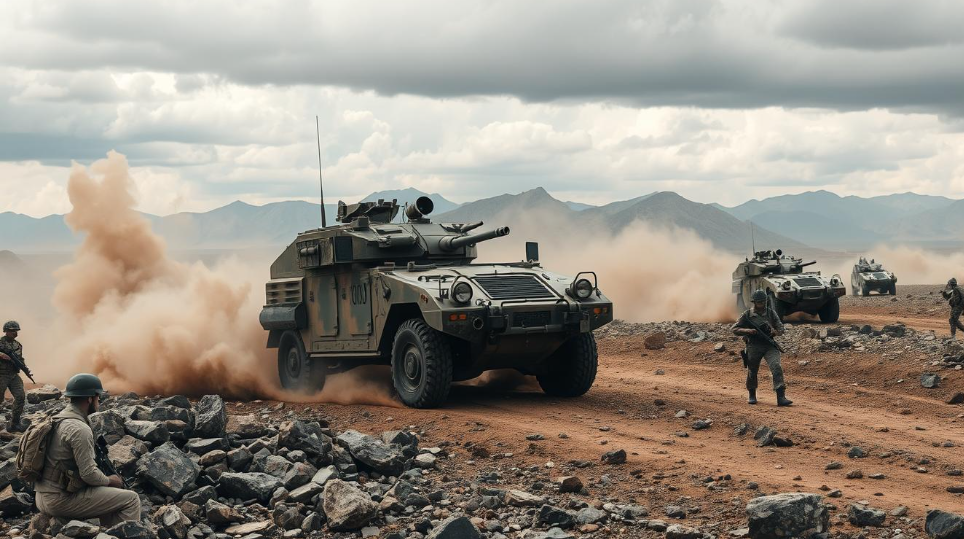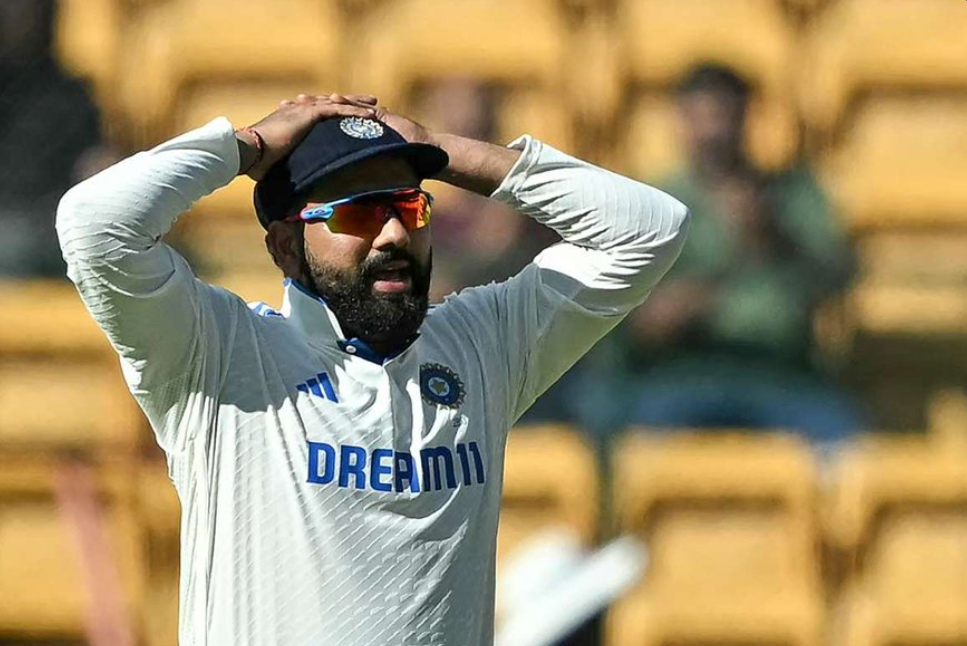Israel reports its first military death in Lebanon
The border between Israel and Lebanon has seen a tragic turn. The Israel Defense Forces (IDF) have confirmed the death of Captain Eitan Itzhak Oster, 22, during combat in southern Lebanon. This is the first Israeli soldier death since the IDF started operations against Hezbollah.
The conflict started after a Hamas terror attack in Israel. This led to an Israeli offensive in Gaza. Hezbollah, allied with Hamas, launched attacks on northern Israel. This has caused over 1,000 deaths in Lebanon and displaced about 1 million people.
Key Takeaways
- Israel has reported its first military death in Lebanon as tensions escalate along the border.
- The clashes come amid a broader conflict that erupted after a Hamas terror attack in Israel, prompting an Israeli offensive in Gaza.
- Hezbollah, which is allied with Hamas, has joined the fray by launching attacks on northern Israel, leading to the current cross-border hostilities.
- The conflict has resulted in the deaths of over 1,000 people in Lebanon and the displacement of around 1 million individuals.
- The IDF has confirmed conducting ground operations against Hezbollah targets in southern Lebanon.
Israel Launches Ground Operations in Lebanon
The conflict between Israel and Hezbollah is getting worse. The Israeli Defense Forces (IDF) have started a ground invasion in southern Lebanon. This is the first big ground operation by Israeli troops since the 2006 Lebanon war.
Israel Confirms First Soldier Killed in Clashes
The IDF has confirmed that Captain Eitan Itzhak Oster, a 22-year-old commando, was killed in combat. This is the first Israeli military fatality since the ground invasion started.
Hezbollah Claims Inflicting Casualties on Israeli Forces
Hezbollah, a Lebanese militant group, says it’s fighting Israeli troops in a border village. They claim to have caused “several casualties” on the Israeli side. But these claims haven’t been checked yet.
The Lebanese army says Israeli forces briefly crossed the Blue Line, a border between the two countries. In response, the IDF has asked people to leave over 20 villages and towns in southern Lebanon.
The rising tensions and ground operations are making people worry about a bigger conflict. Iran and its allies might get involved. The United Nations and the European Union are calling for a ceasefire. They want everyone to follow international humanitarian law to stop more violence.
Escalating Cross-Border Hostilities
Tensions between Israel and Iran-backed Hezbollah have grown. Both sides have launched military strikes along the Lebanon-Israel border. The Israeli Defense Forces (IDF) have hit Hezbollah strongholds in southern Lebanon and Beirut’s southern suburbs.
They targeted “munitions production sites and other terrorist infrastructures,” the IDF said.
Israeli Airstrikes Target Hezbollah Strongholds
Israeli airstrikes have killed over 1,000 people and displaced about 1 million in Lebanon, officials say. These actions are in response to Hezbollah’s rocket attacks on northern Israel. The IDF reports around 100 rockets fired from Lebanon in one day.
Hezbollah Retaliates with Rocket Attacks on Northern Israel
Hezbollah fired a large number of rockets into northern Israel. The IDF is trying to stop these rockets. The Pentagon said two U.S. guided missile destroyers helped, firing about a dozen interceptors.
The growing conflict worries about a bigger regional war. The United States wants a ceasefire. Iran’s support for Hezbollah is under close watch.
“The situation in the region remains highly volatile, with the risk of further escalation. Both sides must exercise restraint and engage in meaningful dialogue to find a diplomatic solution and end the cycle of violence.”
The international community is watching closely. The United Nations peacekeeping force in Lebanon (UNIFIL) is urging respect for Lebanon’s sovereignty. They also call for an end to hostilities.
Origins of the Conflict
The tensions between Israel and Hezbollah started with a Hamas terror attack in southern Israel in October. This attack killed about 1,200 people and took 251 hostages. Israel quickly responded with military action.
Israel then attacked Hamas targets in the Gaza Strip. But, the fight grew bigger when Hezbollah, Hamas’s ally, started attacking northern Israel from Lebanon.
Hamas Terror Attack Prompts Israeli Offensive in Gaza
The Hamas attack in southern Israel was a big reason for the ongoing conflict. It killed around 1,200 people and took 251 hostages. This shocked the nation and led to a strong Israeli response.
Hezbollah Joins the Fray, Launching Attacks on Israel
While Israel was fighting Hamas in Gaza, Hezbollah, backed by Iran and close to Hamas, joined the fight. Hezbollah attacked northern Israel from Lebanon. This made the conflict even more complex.
“The Hezbollah attacks on Israel from Lebanon have opened a new front in the ongoing conflict, adding to the complexity of the situation and the potential for a wider regional crisis.”
The ties between Hamas, Hezbollah, and Israel are key to understanding this complex situation. Their relationships are at the heart of the conflict’s origins and its ongoing evolution.
Israel reports its first military death in Lebanon
The Israel Defense Forces (IDF) have confirmed the tragic loss of Captain Eitan Itzhak Oster, 22. He “fell during combat in southern Lebanon.” This marks the first Israeli military fatality since the launch of ground operations against Hezbollah in the region.
Captain Oster’s death highlights the escalating tensions and risks faced by Israeli forces. They are pushing Hezbollah back from the Lebanese border. The IDF has reported approximately 100 rockets fired from Lebanon towards northern Israel, with Hezbollah claiming to have inflicted casualties on Israeli troops.
“We will continue to act with determination to defend the citizens of Israel and will not rest until quiet and security are restored to the area,” said a statement from the IDF.
The ongoing conflict has already taken a heavy toll. Nearly 500 people were killed in southern Lebanon on Monday alone due to Israeli strikes. The death toll has reached 492, including 35 children, and 1,645 individuals have been injured.
Israel has targeted over 1,300 Hezbollah sites, destroying various weaponry. This includes cruise missiles, short-range rockets, and attack drones. In response, Hezbollah has fired hundreds of rockets at Israel, following the explosion of thousands of pagers and walkie-talkies belonging to its members.
The escalating cross-border hostilities have led to widespread civilian displacement. The United Nations’ peacekeeping force in Lebanon, UNIFIL, expresses grave concern for the safety of civilians in southern Lebanon amidst the intense Israeli bombing campaign.
As the conflict continues to unfold, the international community, including the United States, has called for de-escalation efforts. They urge a safe return for those affected by the violence.
Israel’s Strategic Objectives
The conflict between Israel and Hezbollah in Lebanon is getting worse. Israeli officials have shared their main goals. They want to push Hezbollah back from the Lebanon border. This is to stop the rocket fire that has made around 60,000 people leave their homes in northern Israel.
Hezbollah’s rocket, drone, and missile attacks have not been very effective. This is because Israel has strong missile defense systems. But, some attacks have caused harm and damage. Israel wants to let these displaced people go back home by stopping Hezbollah’s threat.
Pushing Hezbollah Back from Border to End Rocket Fire
Israel has started airstrikes and ground operations against Hezbollah. They are targeting Hezbollah’s strongholds and rocket launchers near the Lebanon border. The aim is to weaken Hezbollah and make a buffer zone. This would stop Hezbollah from easily firing rockets into northern Israel.
Enabling Displaced Israelis to Return Home
Hezbollah’s rocket attacks have made tens of thousands of Israelis in northern Israel leave their homes. Israel’s goal is to stop this threat. They want to let these displaced people go back to their communities and live their lives normally again.
| Statistic | Value |
|---|---|
| Reported killed in the conflict in Lebanon | Over 600 people |
| People killed in a single day of Israeli strikes | At least 72 |
| People wounded in the conflict | More than 2,000 |
| People displaced on both sides of the border | Tens of thousands |
| People displaced in Lebanon due to Israeli strikes | 90,000 in 5 days, 200,000 since Hezbollah began firing rockets |
| Rockets fired by Hezbollah into northern Israel | Dozens |
| Estimated Hezbollah rockets and missiles | Around 150,000, some capable of striking anywhere in Israel |
Hezbollah’s Capabilities and Defenses
Hezbollah, backed by Iran, is a strong opponent for Israel in Lebanon. They have a large tunnel network, are skilled in guerrilla warfare, and have used suicide bombings before. Hezbollah’s deputy leader has said they are ready for war, with tens of thousands of fighters ready to defend their territory.
Israel has bombed Hezbollah for two weeks, causing many casualties and killing some leaders. But Hezbollah still has a lot of power, showing it by attacking Israeli towns with rockets and drones. The group’s leaders have promised to hit back at Israel, keeping the region on edge.
| Hezbollah Capabilities | Hezbollah Defenses |
|---|---|
|
|
Hezbollah has shown it can take a lot of damage but still wants to fight Israel. The fight between Hezbollah and Israel will be key in this conflict. It will decide how things go in the ongoing war.
Risks of Wider Regional Conflict
The fight between Israel and Hezbollah is getting worse. It might even pull the United States into it. President Biden has asked for a ceasefire for weeks. He warns that a big war could happen between the U.S. ally and Iran’s strong proxy in the Middle East.
Iran backing Hezbollah makes things even more complicated. This could lead to a bigger conflict.
U.S. Calls for Ceasefire Amid Escalation Fears
The U.S. keeps asking both sides to stop fighting. They’re worried the fight could get too big and affect more areas. Officials say we need to talk and find a way to stop it before it gets worse.
Iran’s Role as Hezbollah’s Backer
Iran helps Hezbollah a lot. They give them money, weapons, and training. This makes the situation more complex.
Experts think Israel might attack Iran’s places because of this. They might hit military sites and even Iran’s nuclear spots.
Memories of Israel’s 18-year occupation of southern Lebanon (1982-2000) serve as a historical reference in assessing the implications of a potential ground incursion into Lebanon.
“The $7 million U.S. reward for the capture of Ibrahim Aqil, Hezbollah’s Radwan unit leader, reflects U.S. involvement in the region.”
The situation is getting more serious. The chance of a big conflict involving the U.S. and other countries is high. We need careful talks to avoid a huge war that could hurt the whole Middle East.
UN Peacekeepers Caught in the Crossfire
The conflict between Israel and Hezbollah is getting worse. The United Nations Interim Force in Lebanon (UNIFIL) has around 10,000 troops near the border. They warn that Israel’s plans to attack Lebanon are very dangerous for them.
UNIFIL Urges Restraint, Respecting Lebanese Sovereignty
UNIFIL wants everyone to calm down and respect Lebanon’s borders. They say any attack on Lebanon is a big problem. They also want to keep their peacekeepers safe.
Lebanon has lost 601 lives, including 131 civilians. In Israel, 23 soldiers and 26 civilians have died. Over 1.5 million refugees in Lebanon make the crisis even worse.
The UN peacekeepers are in a tough spot. They need to keep things stable and stop things from getting worse. Their job is key to keeping peace in the area.
“The safety and security of UNIFIL peacekeepers is paramount, and any crossing into Lebanon is a violation of the country’s sovereignty and territorial integrity.”
Civilian Toll and Humanitarian Crisis
The conflict between Israel and Hezbollah has devastated Lebanon’s civilians. The Lebanese Ministry of Health reports 55 deaths in Israeli strikes over 24 hours. The Disaster Management Unit says over 1,870 people have died, and more than 9,000 are wounded.
More than 1 million people have lost their homes, creating a huge humanitarian crisis. Aid groups are finding it hard to give food, shelter, and medical help. Workers describe the situation as “apocalyptic.”
| Civilian Casualties | Displacement |
|---|---|
|
|
Attacks on civilian targets, like hospitals and U.N. vehicles, have made things worse. These attacks make it hard for aid groups to help those in need.
“The situation in Lebanon is apocalyptic. Entire communities have been destroyed, and families are struggling to survive without access to basic necessities.”
Many countries, like the Netherlands and Spain, are planning to evacuate their citizens. The fighting shows no signs of stopping soon.
Prospects for Diplomatic Resolution
The conflict between Israel and Hezbollah is getting worse. The U.S. wants a ceasefire, but war risks are high. Finding a solution will need tough talks and diplomacy to meet everyone’s needs.
The U.S. suggests a 21-day ceasefire to stop attacks and find a way out. Diplomats from the U.S., Israel, and others are working hard. They want a peaceful solution for everyone’s safety.
But Iran’s leader sees American and European presence as a problem. This makes finding peace harder. The conflict could grow, involving Iran, Israel, and their allies.
The U.S. and others push for UN Resolution 1701. Passed in 2006, it aims to disarm Hezbollah and bring in UN peacekeepers. This could help calm things down.
Despite efforts, the situation is still unstable. Israel has attacked Hezbollah, and Hezbollah has fired rockets back. This makes the conflict worse.
The world must find a way to support Israel while keeping the region stable. A lasting peace will need everyone to be flexible and willing to compromise. It’s a tough challenge, but it’s essential for peace.
Conclusion
The conflict between Israel and Hezbollah shows how fragile the Middle East is. The IDF’s first death in Lebanon and the ongoing hostilities have caused a big humanitarian crisis. This situation is very tense and could get worse.
Civilians are getting hurt, many have to leave their homes, and the risk of a bigger war is high. This makes solving the problem very hard for leaders.
To fix this, diplomats need to work hard to find a lasting solution. The U.S. calling for a ceasefire is a good start. But, Iran’s support for Hezbollah makes things even more complicated.
Finding peace will need everyone to work together. They must find a way that keeps Israel safe and respects Lebanon’s freedom.
The world must keep watching and help find peace. We need a solution that stops more violence and helps those caught in the middle. A big effort is needed to break the cycle of violence and bring stability to the area.
FAQ
What is the key event reported in this news coverage?
Israel has reported its first military death in Lebanon. This happened as tensions along the border escalated. The Israel Defense Forces (IDF) confirmed the death of Captain Eitan Itzhak Oster, 22, who “fell during combat in southern Lebanon.”
What is the context behind this military death?
The death marks the first loss of an Israeli soldier since the IDF launched ground operations against the Iran-backed Hezbollah militant group in Lebanon. The clashes come amid a broader conflict that erupted after a major Hamas terror attack in Israel, prompting an Israeli offensive in Gaza.
How have the cross-border hostilities between Israel and Hezbollah escalated?
The IDF has launched airstrikes on Hezbollah strongholds in southern Lebanon and the southern suburbs of Beirut. Hezbollah has stepped up its rocket attacks on northern Israel. The ongoing strikes have reportedly killed more than 1,000 people and displaced around 1 million from their homes in Lebanon.
What is the origin of the current conflict between Israel and Hezbollah?
The conflict started with a major Hamas terror attack in southern Israel in October. This attack prompted an Israeli offensive against Hamas targets in the Gaza Strip. Hezbollah, allied with Hamas, then joined the fray by launching attacks on northern Israel from Lebanon, sparking the ongoing cross-border hostilities.
What are Israel‘s strategic objectives in its operations against Hezbollah?
Israel’s goal is to push Hezbollah back from the Lebanon border. They aim to stop the barrage of rocket fire. This has forced around 60,000 people to flee their homes in northern Israel. Israel wants to enable these displaced residents to return to their homes.
What are Hezbollah’s capabilities and defenses?
Hezbollah has a vast tunnel network and a reputation for guerrilla warfare and suicide bombings. They have tens of thousands of fighters dug in to defend the territory they have controlled for decades. The group’s surviving deputy leader has declared Hezbollah ready for war, posing a formidable challenge for the IDF’s ground operations.
What are the risks of the conflict escalating into a wider regional conflict?
The escalating conflict has raised concerns of a wider regional conflict that could draw in the United States. Iran’s role as Hezbollah’s primary backer adds to the potential for the conflict to spiral. The U.S. has called for a ceasefire amid the escalation fears.
How have UN peacekeepers been affected by the conflict?
The United Nations Interim Force in Lebanon (UNIFIL) has warned that Israel’s plans to launch ground operations in Lebanon are a “dangerous development.” UNIFIL has urged all parties to step back from escalatory acts. The safety and security of its peacekeepers is paramount.
What is the civilian toll and humanitarian crisis resulting from the conflict?
The ongoing Israeli strikes in Lebanon have taken a heavy toll on civilians. The Lebanese Ministry of Health reported that about 55 people were killed in Israeli strikes over a 24-hour period. The fighting has also displaced around 1 million people from their homes, resulting in a severe humanitarian crisis.
What are the prospects for a diplomatic resolution to the conflict?
The prospects for a diplomatic resolution remain uncertain. While the United States has called for a ceasefire, the risks of an all-out war between Israel and Iran’s proxy force in the region remain high. Resolving the crisis will require complex diplomatic efforts to address the underlying tensions and find a sustainable solution that satisfies all parties involved.
Walz and Vance clash, politely, at policy-heavy vice presidential debate











